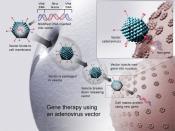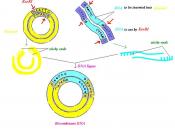Introduction
Human beings carry approximately half a dozen defective genes. Most people do not know this unless someone they know is affected by a genetic disorder. It is believed that approximately one in ten people have, or will develop, an inherited genetic disorder, and there are approximately 2,800 specific conditions caused by defects or mutations in just one gene. Fortunately, there is a potential approach to the treatment of genetic disorders in humans known as gene therapy.
While it can be thought of as somewhat controversial, gene therapy is a remarkable scientific breakthrough, which utilizes complex scientific techniques that continue to evolve. The value of gene therapy extends from curing horrible genetic diseases, to changing the genetic makeup and physical appearance of future generations. Although clinical trials are underway, the ethical considerations of this scientific method continue to be highly scrutinized. Therefore, it is essential to understand the history, concepts and technical aspects of this therapy to be able to sufficiently analyze and recognize its impact on modern medicine.
Gene Therapy: Historical Overview
Gene therapy is by no means a new field of scientific query. The idea was first proposed back in the 1950's when James Watson and Frances Crick described a model of the double-stranded helix of DNA and basically discovered the structure of deoxyribonucleic acid. At that time, Crick was quoted as saying, "We used to think that our fate was in our stars. Now we know that, in large measure, our fate is in our genes" (Barker, 1995, p. 12).
Knowing that DNA is composed of nucleotide base pairs in certain patterns, scientists began to ask questions about the DNA structure and how it could be manipulated. Scientists understood that the base pairs could be arranged incorrectly, and this prompted them to wonder if it would be...


